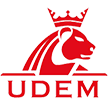Exchange Traded Derivatives Vs Over The Counter OTC Derivatives
Content
- What are the pros and cons of derivative trading?
- Derivatives – Exchange Traded & OTC
- Proportion used for hedging and speculation
- Exchange-Traded Derivative: Definition, Examples, Vs. OTC
- Types of exchange-traded derivatives
- A user’s guide to the Triennial Central Bank Survey of foreign exchange market activity
- Exchange-traded derivatives statistics
Swaps are derivative contracts representing an agreement between two parties who want to exchange liabilities or cash flows, commonly a bond or a loan. A call option gives the call option buyer the right to buy an asset at a strike price until the contract’s expiry date. For example, if the stock price has gone up, the buyer can purchase the stocks at a lower price and sell what are etds for profit.
What are the pros and cons of derivative trading?
If both parties in a futures contract are speculating investors or traders, it is unlikely that either of them would want to make arrangements for the delivery of a large number of barrels of crude oil. Speculators can end their obligation to https://www.xcritical.com/ purchase or deliver the underlying commodity by closing (unwinding) their contract before expiration with an offsetting contract. Hedgers use exchange traded derivatives to manage their financial risks by offsetting their exposure to price movements in the underlying asset. The main advantages of derivatives are that they offer exposure to various types of assets that can’t trade otherwise. Also standard is the use of leverage that enables multiplying profits or locking in prices to hedge risk.
- By understanding the benefits and risks of ETDs and following regulatory requirements, market participants can use ETDs effectively to achieve their investment objectives and manage risk in an increasingly complex financial landscape.
- For example, if you have a TCS stock derivative, you could get paid with TCS shares.
- There are many different types of derivatives that can be used for risk management, speculation, and leveraging a position.
- Exchanges may have variations in policy around liquidations or how they handle losses – for example, many operate an insurance fund that can protect winning traders if a losing trader cannot make good on their obligations.
- Though some orders may be processed in a physical location like the NYSE, the great majority of trades are completed through electronic means without regard to a physical location.
- If the stock’s price is below the strike price at expiration, the call will be worthless and the call seller will keep the premium.
Derivatives – Exchange Traded & OTC
In the OTC market, it is easy to get lost in the complexity of the instrument and the exact nature of what is being traded. Exchange-traded derivatives have become increasingly popular because of the advantages they have over over-the-counter (OTC) derivatives. These advantages include standardization, liquidity, and elimination of default risk. Private companies often rely on venture capitalists for investment, and this usually results in the loss of operational control. For example, a seed funding firm may require that a representative from the funding firm hold a prominent position on the board.
Proportion used for hedging and speculation
Exchange-traded derivatives offer more liquidity, transparency, and lower counterparty risk than over-the-counter (OTC) derivatives at a cost of contract customization. The exchange-traded derivatives world includes futures, options, and options on futures contracts. Derivatives are financial instruments that obtain value from an underlying asset, including stocks, bonds, commodities, currencies, interest rates, and indices.
Exchange-Traded Derivative: Definition, Examples, Vs. OTC
For example, the buyer who works at a large airline knows they need a lot of oil to operate and assumes the price will rise in the future. They enter a futures contract with the oil supplier to lock in current prices for some time to guarantee a fixed cost. Different derivative contract types are commonly used by companies to lock in current prices of commodities or individual investors to speculate on price swings to earn a profit. Index options are options in which the underlying asset is a stock index; the Cboe currently offers options on the S&P 500 and 100 indices, the Dow Jones, FTSE 100, Russell 2000, and the Nasdaq 100. Each contract had different specifications and can range in size from the approximate value of the underlying index to 1/10th the size.
Types of exchange-traded derivatives
Options require investors to pay a premium that represents a fraction of the contract’s value. An asset’s price is fixed, and the expiration date is set, but the buyer is not obligated to use it. As such, anyone can buy or sell them like stocks in a regulated market, decreasing the risk of one of the parties defaulting on the transaction. If you believe the price will fall, you may use a futures contract to fix the price of commodities you own to avoid taking losses when the price drops.
A user’s guide to the Triennial Central Bank Survey of foreign exchange market activity
Exotics, on the other hand, tend to have more complex payout structures and may combine several options or may be based upon the performance of two or more underlying assets. Exchange trading includes stock options, currency futures, options and swaps, and index futures. Each Exchange traded derivative contract has a predetermined expiration date, lot size, settlement process, and other rules and regulations.
These contracts usually come in the form of futures, forwards, options, and swaps. Over the last decade, the size and structure of the global credit default swap (CDS) market have changed markedly. With the help of the BIS derivatives statistics, we document how outstanding amounts have fallen, central clearing has risen and the composition of underlying credit risk exposures has evolved. Netting of CDS contracts has increased, due to the combination of a higher share of standardised index products and the clearing of such contracts via central counterparties. Underlying credit risks have shifted towards sovereigns and portfolios of reference securities with better credit ratings. The distribution of credit risks across counterparty categories has remained broadly unchanged.
ETDs facilitate the price discovery process by providing a transparent platform where buyers and sellers can openly trade and determine the market-clearing price for the underlying asset. It enhances market liquidity by offering standardized contracts with easily tradable features. This liquidity attracts a wide range of participants, from retail investors to institutional traders, thereby increasing market efficiency.
Options are contracts that give investors the right but not the obligation to buy or sell an asset. Investors typically use option contracts when they don’t want to take a position in the underlying asset but still want exposure in case of large price movements. OTC-traded derivatives generally have a greater possibility of counterparty risk, which is the danger that one of the parties involved in the transaction might default. To hedge this risk, the investor could purchase a currency derivative to lock in a specific exchange rate.
Cryptocurrency futures are an agreement between two parties to buy or sell a digital asset for a set price at a fixed date in the future. Traders buy contracts in a particular asset if they believe the price will go up, or they sell if they think the price will go down. These are typically large and regulated markets open to investors who meet specific criteria and provide a secure trading environment. Derivatives also enable investors to gain exposure to more assets than they would with a traditional investment. It is known as leverage, allowing traders to amplify their returns using borrowed money.
Through Exchange Traded Derivatives, investors can invest in real estate without having to own any buildings or corporate facilities. Although real estate ETDs are not as popular as they used to be, they remain traded in good volumes despite their diminished popularity. A niche knowledge of these instruments is necessary since they are complex and structured instruments. Because of this, traders are easily able to reverse their positions by connecting with their counterparts and making opposite bets against or selling their stakes. Due to the liquid market, these parties can be easily found and traded, resulting in the stake being sold without any significant loss. ETDs are transactions between parties through an intermediary rather than between them directly.
Derivatives can be used to hedge a position, speculate on the directional movement of an underlying asset, or give leverage to holdings. These assets are commonly traded on exchanges or OTC and are purchased through brokerages. The Chicago Mercantile Exchange (CME) is among the world’s largest derivatives exchanges. A CDS can be unsecured (without collateral) and be at higher risk for a default. Inverse exchange-traded funds (IETFs) and leveraged exchange-traded funds (LETFs)[33] are two special types of exchange traded funds (ETFs) that are available to common traders and investors on major exchanges like the NYSE and Nasdaq.
In these certain situations, derivatives are one of the best options to jump in. The clearing house then, is effectively the counterparty for the transaction that faces the trader and not the other party as would be the case in an OTC transaction. This reduces much of the counterparty credit risk present in an OTC derivative transaction. Swaps are derivative contracts that involve two holders, or parties to the contract, to exchange financial obligations. Interest rate swaps are the most common swaps contracts entered into by investors.
Though some orders may be processed in a physical location like the NYSE, the great majority of trades are completed through electronic means without regard to a physical location. This process has resulted in a substantial increase in high-frequency trading programs and the use of complex algorithms by traders on exchanges. When the actual market value of derivatives (rather than notional value) is the focus, the estimate of the size of the derivatives market changes dramatically. However, by any calculation, the derivatives market is quite sizable and significant in the overall picture of worldwide investments. However, they come with a degree of complexity, and as such, the market is still less liquid than those of futures and perpetuals.
The party agreeing to buy the underlying asset in the future, the „buyer“ of the contract, is said to be „long“, and the party agreeing to sell the asset in the future, the „seller“ of the contract, is said to be „short“. Determining the actual size of the derivatives market depends on what a person considers part of the market and thus what figures go into the calculation. The larger estimates come from adding up the notional value of all available derivatives contracts. Derivatives are contracts whose value is derived from an underlying asset or security.














